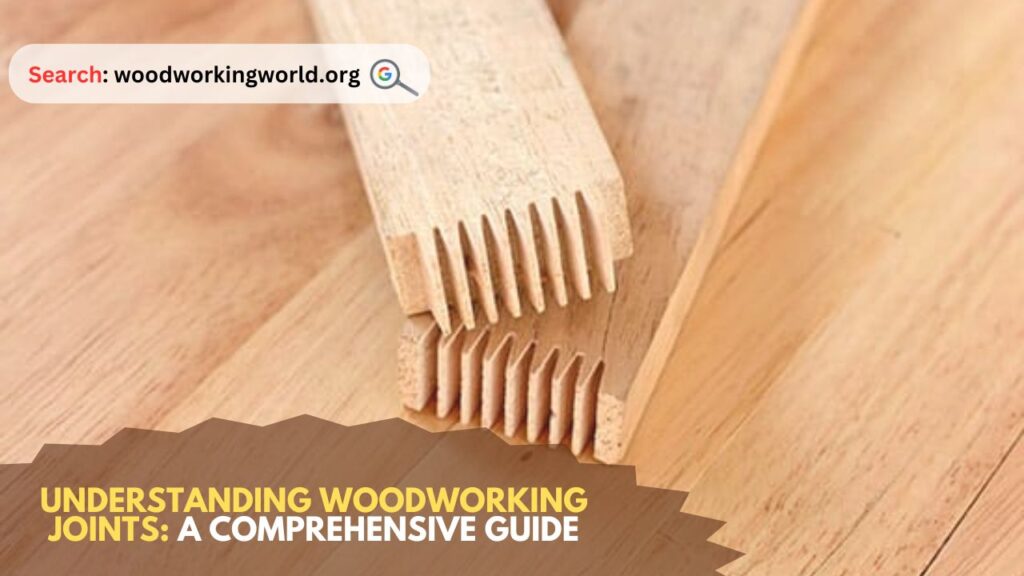Understanding Woodworking Joints: A Comprehensive Guide
What Are Woodworking Joints?
Definition and Importance
Woodworking joints are the fundamental building blocks of furniture making, cabinetry, and other wooden structures. These are methods of joining two or more pieces of wood to create a stable and often aesthetically pleasing structure.

History and Evolution
The art of woodworking dates back to ancient civilizations, with early examples seen in Egyptian tombs and Chinese temples. Over centuries, craftsmen have refined techniques to ensure durability and beauty.
Why Woodworking Joints Matter in Craftsmanship?
Strength and Durability
Proper joints determine how long a piece of furniture will last. A well-crafted joint can withstand weight, pressure, and time.
Aesthetic Appeal
Beyond utility, woodworking joints can be a design element, adding a touch of elegance to wooden projects.
Start Your Next Project With Teds’ Archive Of 16,000 Plans!
Instant access to all 16,000 woodworking plans with step-by-step details, photos, materials lists and more
Monthly free plans with lifetime membership access – No renewals, recurring fees or other charges


Types of Woodworking Joints
Butt Joints
Features and Uses
The simplest of all joints, a butt joint connects two pieces of wood by their ends. Commonly used in basic constructions, they are easy to create but lack strength.
Pros and Cons
- Pros: Simple and quick to make.
- Cons: Not the strongest option; often requires reinforcement.
Miter Joints
How They Work
A miter joint is formed by cutting two pieces of wood at an angle, typically 45 degrees, and joining them. They’re often used in picture frames and moldings.
Applications in Projects
Great for projects where aesthetics matter, such as decorative boxes or frames.
Dovetail Joints
Why They Are So Popular
Dovetail joints are interlocking joints known for their strength and visual appeal. Perfect for drawers and cabinets.
Variations of Dovetail Joints
There are several types, including through dovetails, half-blind dovetails, and sliding dovetails, each suited for different needs.
Mortise and Tenon Joints
Classic Applications
A traditional joint where one piece of wood fits into a hole in another. Used in tables, chairs, and doors.
Advantages and Challenges
Extremely strong but requires precision and patience to create.
Tongue and Groove Joints
Seamless Connections
This joint features a protruding tongue on one piece that fits into a groove on another, ensuring a snug fit. Commonly used in flooring and paneling.
Where to Use Them
Ideal for creating smooth, even surfaces.
Factors to Consider When Choosing a Joint
Strength Requirements
Consider the weight and stress the joint will need to bear. For heavy-duty furniture, choose robust joints like dovetails or mortise and tenon.
Aesthetic Considerations
Some joints, like dovetails, add a decorative element, while others, like butt joints, are more functional.
Tools and Materials Availability
Ensure you have the right tools and materials before starting a project.
Tips for Mastering Woodworking Joints
Practice Makes Perfect
The more you practice, the better you’ll get. Start with simple joints and work your way up.
Precision Is Key
Always measure twice and cut once. Precision ensures tight, sturdy joints.
Invest in Quality Tools
High-quality saws, chisels, and clamps make a significant difference in the outcome.
Common Mistakes to Avoid in Woodworking Joints
Neglecting Measurements
Inaccurate measurements lead to loose or misaligned joints.
Choosing the Wrong Joint for the Job
Not all joints are suited for every application. Match the joint to the project’s needs.
Rushing the Process
Take your time to ensure each cut and connection is perfect.
Conclusion
Mastering woodworking joints is an art and a science. With practice, precision, and patience, anyone can elevate their craftsmanship, creating durable and beautiful wooden structures.
FAQs
What is the easiest woodworking joint to make?
The butt joint is the easiest to make, ideal for beginners.
Which woodworking joint is the strongest?
Dovetail and mortise and tenon joints are among the strongest.
How do I learn woodworking joints as a beginner?
Start with simple projects, watch tutorials, and practice consistently.
What tools do I need for making woodworking joints?
Essential tools include saws, chisels, clamps, and measuring tools.
Can woodworking joints be used for outdoor furniture?
Yes, but ensure you use weather-resistant wood and finishes for durability.